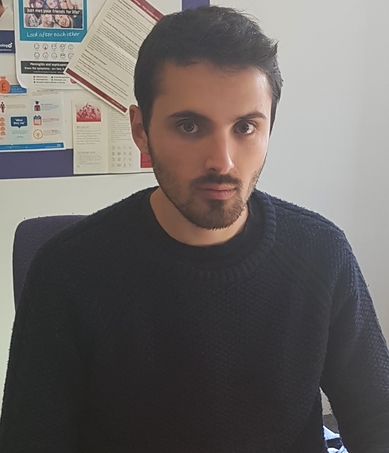Date published: 10/09/18

Glove sensors for monitoring Alzheimer’s disease
- Name: Tristan Beranger
- Current Organisation: Leeds Beckett University
In May, Translate opened its summer student project scheme to support small medical technology development projects in the Leeds City Region. The scheme proved to be a massive success and 26 unique projects were funded. Learn more about their work in this blog.
My name is Tristan Beranger and I am completing the last year of my 5-year Engineering Degree with a specialisation in Physics at the University of Strasbourg. I am interested in medical engineering and the development of devices for clinical application. I am delighted to have been given the opportunity to be involved in the development of the “Clasp” glove with motion sensors for management of Alzheimer’s Disease. This project gives me the opportunity to apply my medical engineering skills.
There is a great need to develop sensitive and reproducible assessment tools for Alzheimer’s disease, which affects more than half a million people and costs the National Health Service £26 billion annually. The “Clasp” glove was manufactured by Axxonet System Technologies Pvt Ltd, India, to measure upper limb movement in neurological disease. The Luria three stage command test was chosen to provide clinically relevant measurements. Healthy volunteers wearing the “Clasp” glove have been carrying out the movement tasks.
My work with the “Clasp”
My role is to modify the “Clasp” glove motion sensor outputs and software. The glove has previously been used to measure reach and grasp tasks in healthy volunteers and patients with Parkinson’s disease. The Luria three stage command task involves much more hand movements. There are three specific hand movements: a cutting movement with the fingers fully extended, a fist movement with the knuckles facing downwards and a palm down hand movement with the fingers fully extended. I have amplified the sensor outputs, created a program to smooth the sensor data and created a program to measure hand aperture.
My “Clasp” glove modifications will allow use of the glove for assessment of upper limb and hand movement in Alzheimer’s disease. I am currently testing the “Clasp” glove using healthy volunteers. Then we will move onto testing in Alzheimer’s disease patients. I expect that patients will perform hand movements less well suited to the task because of memory loss and difficulties with cognitive or problem-solving abilities.







